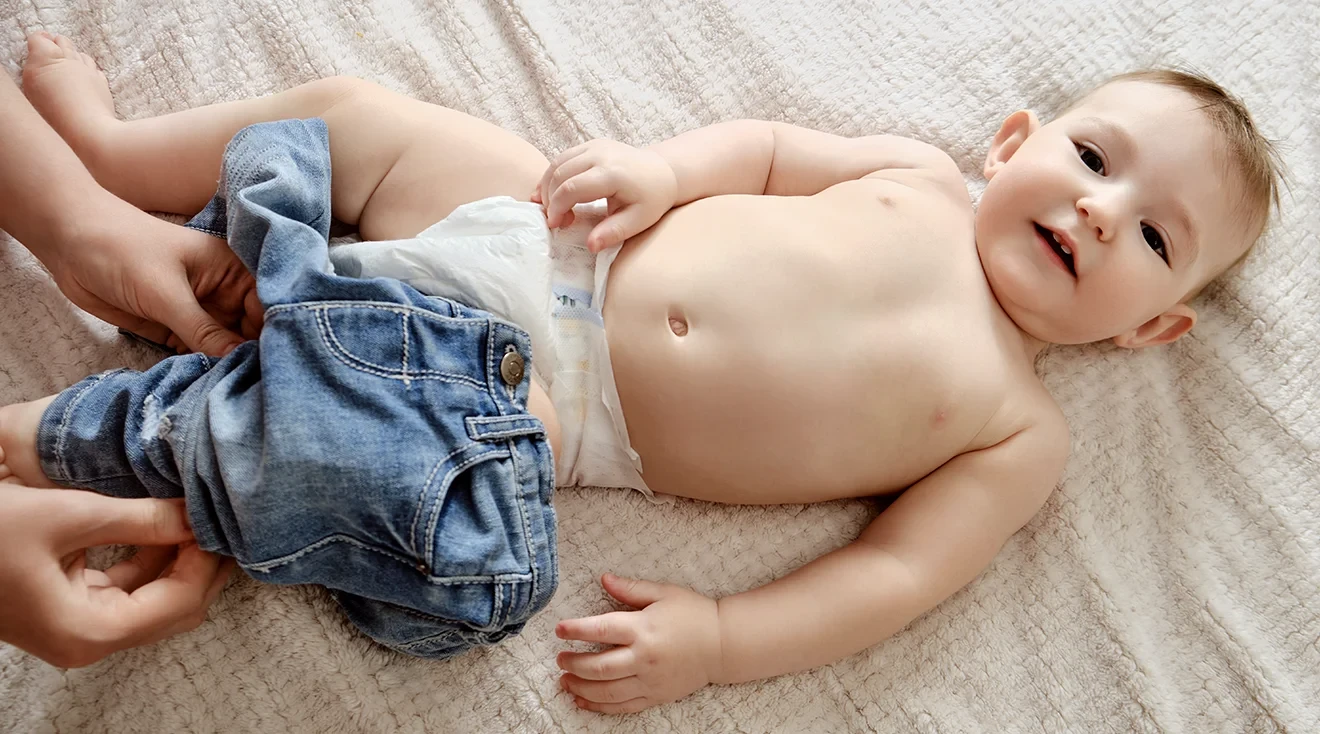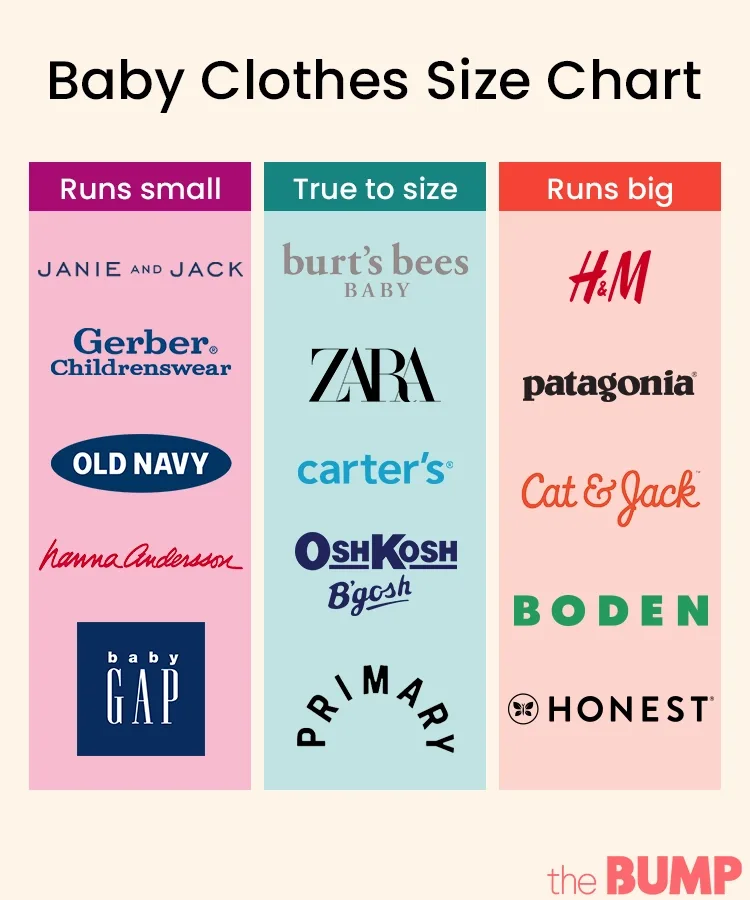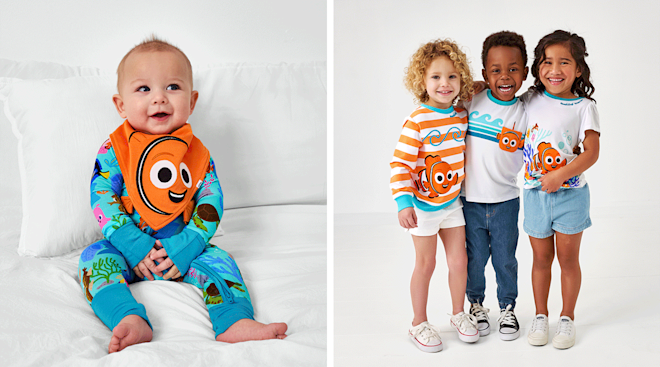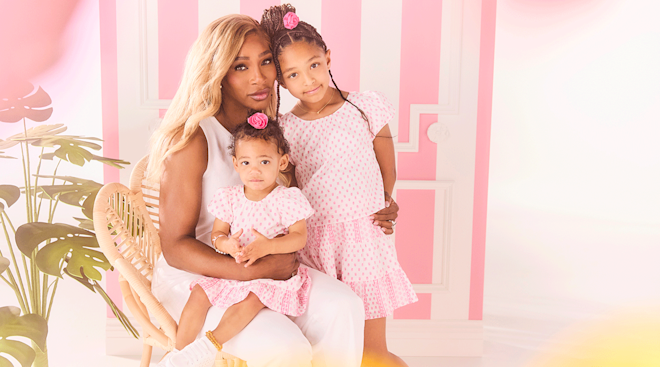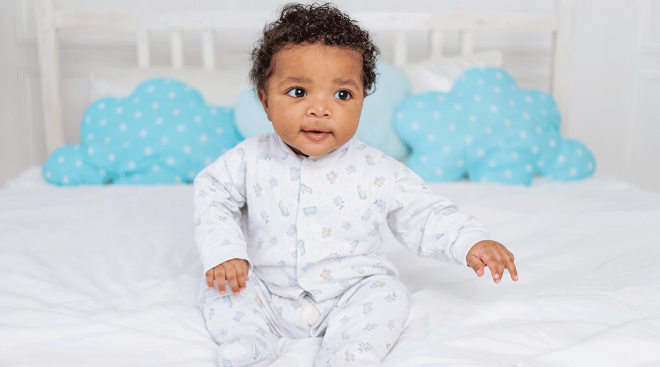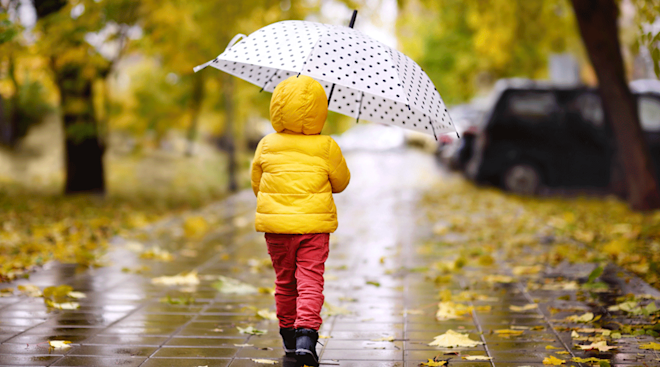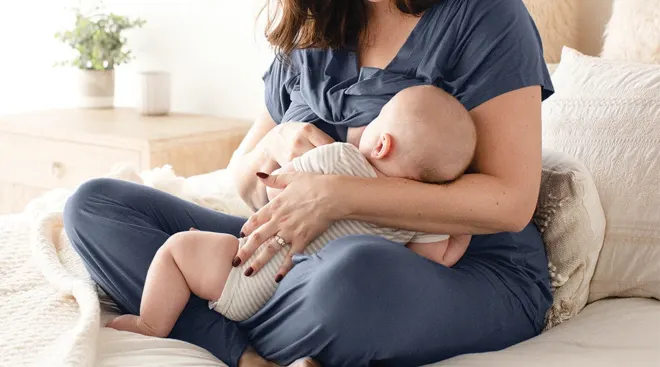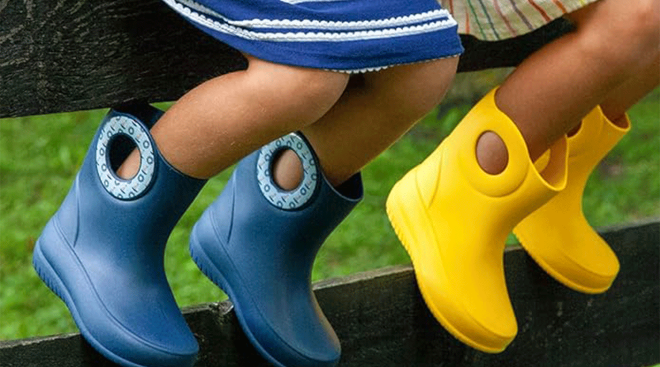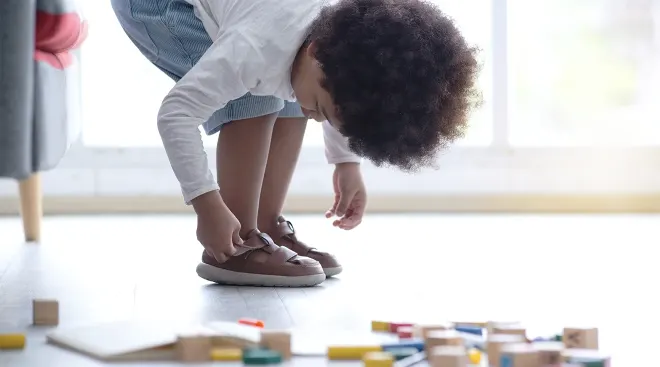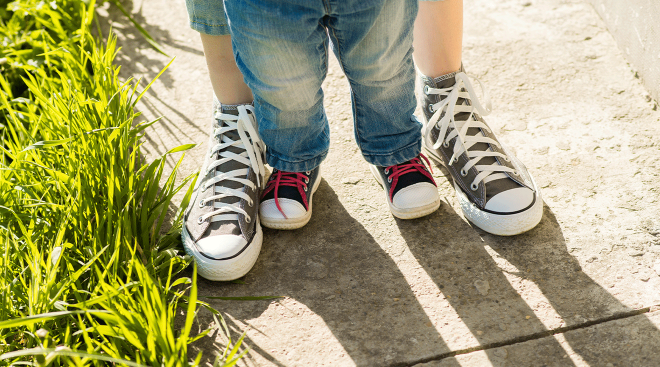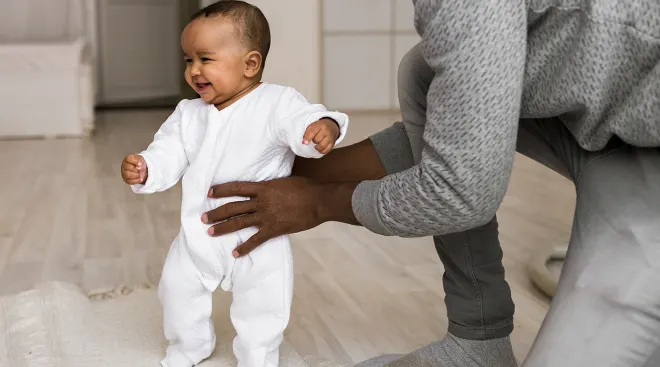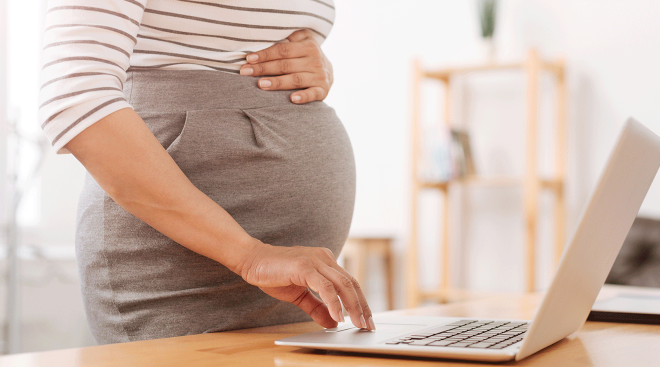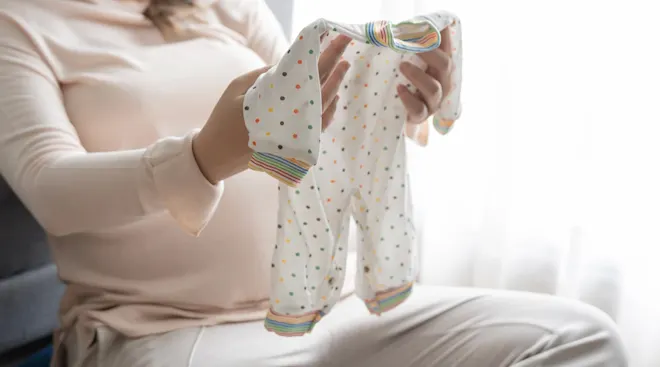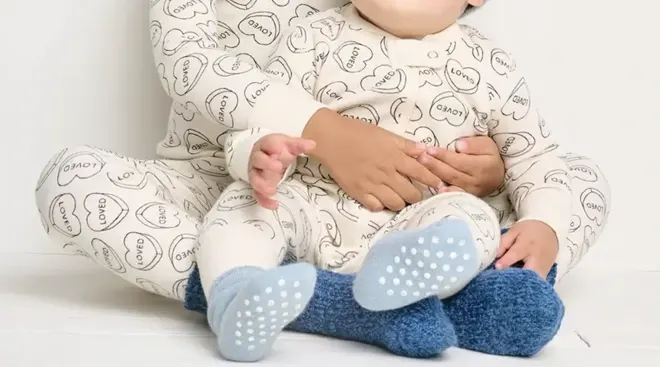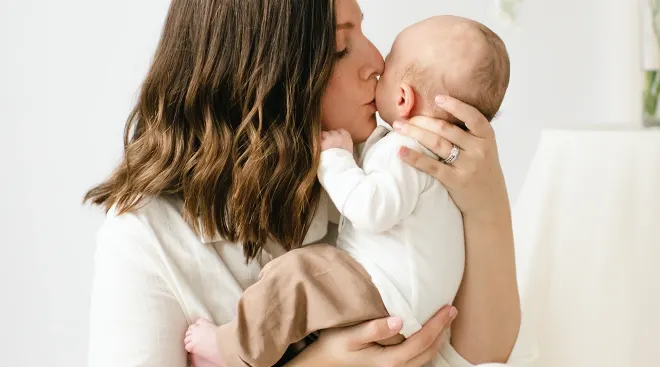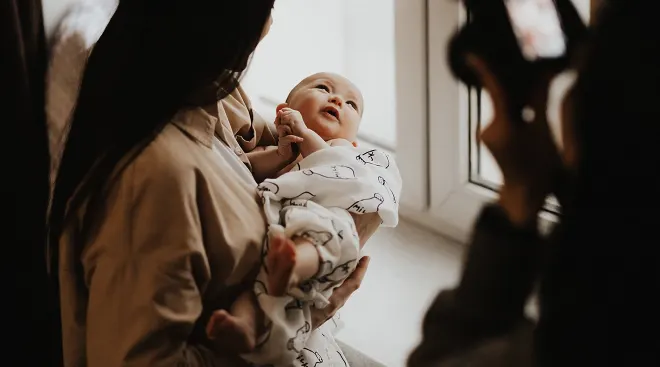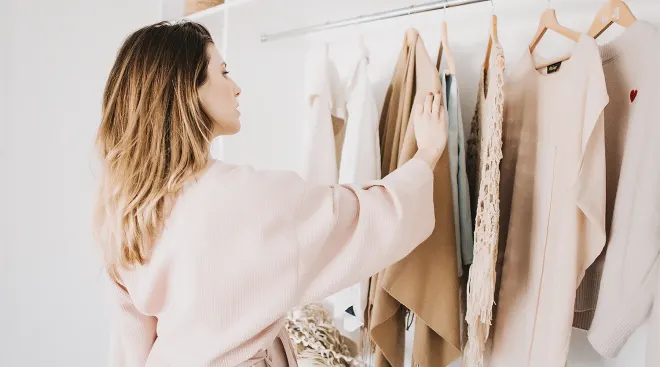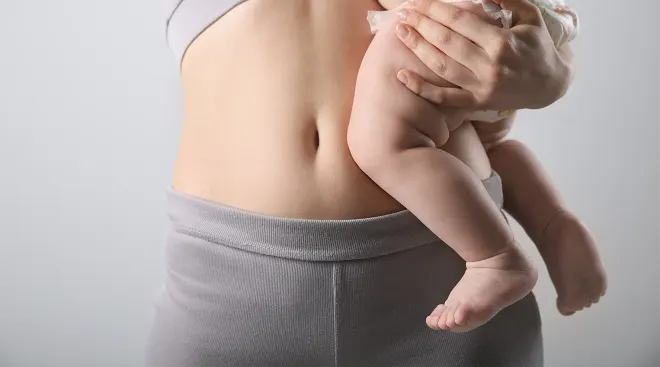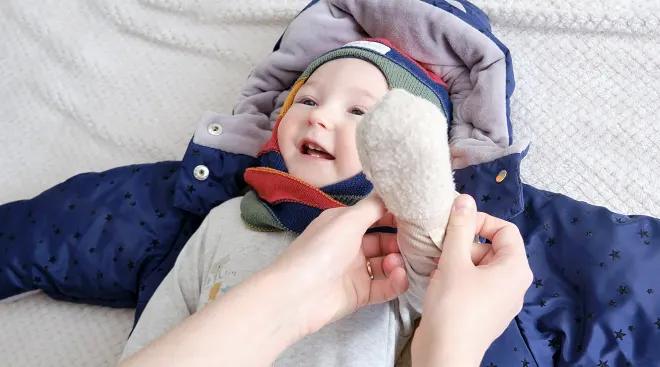How to Choose the Right Baby Clothes Sizes
If you’ve ever tried shopping for baby clothes, you know that the sizing isn’t straightforward. In fact, it’s not uncommon for parents to end up with several different sizes to see what actually fits. That’s because baby clothes sizes aren’t standardized in the US—rather, they’re specific to the brand you’re buying from. Like adult clothing, some brands will run large, small or true to size. To make matters more confusing, some brands beloved among American parents use European baby clothes sizes, which are based on centimeters instead of age ranges.
Below, we asked experts to break down how baby clothes sizes work, including European sizes, as well as offer a handy baby clothes size chart to make shopping easier.
When shopping for baby clothes, you’ll likely see the same sizes over and over again. But because baby clothes sizes in America are based on age, rather than baby’s actual height and weight, they differ from brand to brand— meaning 3-6M in one brand could fit much differently than 3-6M in another brand. The most common sizing options you’ll see include:
- Preemie
- Newborn (NB)
- 0-3M (months)
- 3-6M
- 6-9M
- 9-12M
It’s worth noting that some baby clothing brands only show the higher end of the sizing range on their clothes—so if you spot a onesie labeled 9M, it really means it’s a 6-9M size.
Of course, just because babies are the same age doesn’t mean they’re all the same size. So how can you figure out what size baby clothes to buy, especially if you’re shopping online? Instead of going off baby clothes sizes, experts recommend sticking to baby’s height and weight. “In the US, most brands’ sizes are based on age, [but] babies, toddlers and children can vary significantly in weight and height, regardless of age. It’s best to determine size based on their individual height and weight measurements,” says Kara Carter, chief product officer at baby clothing brand Hanna Andersson.
Below, a few tips to help parents navigate baby clothes sizes:
-
Have baby’s measurements handy. Knowing baby’s height and weight measurements is key when shopping for baby clothes, as most brands’ baby clothes size charts offer height and weight ranges.
-
Ask for a size chart. Most baby brands will have a baby clothes size chart on their website, but if you’re having trouble finding one, reach out to their customer service for sizing guidance before shopping.
-
Think about the fabric: Most of us have excitedly purchased a new clothing item, only to see it shrink a few sizes after the first wash—and baby clothes are no different. Considering how much laundry babies go through, you’ll want to pick fabrics that will hold up well and resist shrinking in the washing machine and dryer.
-
Keep the tags on: This gives you the flexibility to return or exchange items that don’t quite fit baby. After buying the item, leave the tags on until you’re ready to try it on your child. If it fits, remove the tags and wash it before letting baby wear it. If it doesn’t fit, take the item back to the store.
Newborn clothes size
With all the discrepancies around baby clothes sizes, it can be hard to shop for a newborn that hasn’t arrived yet. Ali Wing, founder and CEO of baby store Giggle, advises parents-to-be to stock up on baby clothes in a range of sizes, but not to cut the tags off all the newborn clothes. “Babies come into this world in all shapes and sizes, so don’t buy everything under the sun before you meet your son or daughter,” Wing says. Instead, get a few newborn essentials and wash them ahead of baby’s first few days. See how the clothes fit at the time of birth to help you gauge how many you might need in the coming weeks. Over time, you’ll learn more about baby’s shape and your preferences, and you’ll have a better idea of what will work best for them. “It has just as much to do with things like neck and head shape and whether you’ll prefer crew necks or kimono-style onesies,” says Wing.
Worried about clothes sized for newborns fitting baby at birth? Don’t. While sizing does vary between brands, Wing says the newborn clothes size typically represents an average baby at birth, up to 21.5 inches long and five to eight pounds. Plus, they usually fit a wide range, so chances are baby will fit into these clothes at birth. If baby is bigger or hits an early growth spurt, you can exchange any extras for the next size up, 0 to 3 months, which usually fits babies anywhere between eight to 12.5 pounds.
Navigating toddler clothing sizes
As baby grows into a toddler and beyond, you’ll notice the clothing sizes begin to change. This distinction happens just as your tot turns 2. The most common toddler clothing sizes you’ll see include:
- 12-18M
- 18-24M
- 2T
- 3T
- 4T
At 2 years old, the age range for the clothing shifts. Up through 24M, baby clothes sizes refer to the maximum age range for that size, but toddler clothes sizes refer to the minimum. Put another way, toddler sizes are meant to last the entire year until their next birthday, since kiddos this age aren’t experiencing growth spurts at the same pace as infants. “The 24 months size is designed for babies up to 24 months. On the other hand, 2T is created for toddlers between 2 and 3 years old,” Carter explains.
Another noticeable difference between 24M and 2T sizes? The fit and the extra room given for diapers, since many toddlers begin potty training around age 2. “2T clothing will be slimmer towards the bottom of the garment. Clothing labeled 24 months will have a wider bottom to make room for diapers,” Carter says. “Baby-specific garments are meant to accommodate a child that’s in a diaper and has more of a baby-specific shaped body.”
When to move up a size in baby clothes
It’s no secret that babies grow quickly, and you might be wondering when to move up a size in baby clothes. According to Carter, clothes that appear too small, “snug in the width” and short in “overall body length” are key indicators. But with how quickly baby’s growing, you might also be wondering how to get the most bang for your buck. Carter suggests looking for a few key features that can help you maximize the life-span of baby’s clothes:
- Pant cuffs: Fold these up or down to accommodate a growing tot
- Adjustable snaps and buttons: These help you get more wear out of the clothing as baby grows
- Durable fabrics: Babies go through a lot of outfit changes, so you’ll want fabrics that can endure multiple wears and machine washes
Another option is to buy clothing that’s a little loose (but not so loose that baby trips over it!), says Wing. “No clothes are made to be grown out of in a week. Trust the market and follow the sizing charts until you learn more about baby.”
As if it wasn’t hard enough, shopping for baby clothes is made even trickier because not all brands use American sizing. Many popular brands, including Hanna Andersson and Mini Rodini, use European baby clothes sizes. (Of course, brands based in Europe will also use European sizing.) European baby clothes size charts are labeled in centimeters (hello, metric system) and display the maximum height per size. “The sizing relies more on the length of baby than their age,” Carter says. “Generally, a brand will designate a number for a specific size, rather than a range.” However, just like with American baby clothes sizes, European baby clothes sizes can vary between brands, running smaller or larger, Carter says. So, it’s still best to know baby’s measurements and check each brand’s individual baby clothes sizing charts.
Size 60 in baby clothes
Size 60 in European baby clothes size charts means it’s meant for a maximum height of 60 centimeters (approximately 23.6 inches) and is roughly equivalent to the 3-6M size.
Size 70 in baby clothes
Size 70 equates to a max height 27.5 inches and is the equivalent of 6-9M or 6-12M sizes.
Size 80 in baby clothes
Size 80 in European baby clothes size charts is about the same as 18-24M and is meant for a maximum height of about 31.5 inches.
Size 90 in baby clothes
Size 90 gets into toddler clothing sizes and is meant for a maximum height of around 35.5 inches. It’s roughly the same as 2T, but may also equate to 3T for some brands.
Size 100 in baby clothes
Size 100 in baby clothes is equivalent to 3T or 4T, based on the brand. The size is meant for a maximum height of around 39.4 inches.
Now that you know a little more about baby clothes sizes, you might be wondering which brands run small or big—and feeling a little like Goldilocks trying to find the perfect fit. To help, we’ve listed some popular baby clothing brands according to general fit, as well as provided a handy baby clothes size chart to reference.
Brands that run small
Brands that run large
- H&M Kids
- Patagonia
- Target’s Cat & Jack
- Boden
- The Honest Company
Brands that fit true to size
Of course, even with this list and baby clothes size chart, you may find some of these brands run larger or smaller based on baby’s measurements. Again, the best way to find the brands and sizes that work best for your child is to base them off baby’s individual height and weight.
Plus, more from The Bump:
Kara Carter is the chief product officer at baby clothing brand Hanna Andersson, where she leads the brand’s merchandising and design teams across all categories, including baby and kids’ apparel, pajamas, product collaborations and accessories. She earned her bachelor’s degree from the University of Virginia.
Ali Wing is the founder and CEO of baby store Giggle. She has over two decades of experience in consumer marketing, working with brands such as Nike, JCPenney and more, and currently serves as the CEO and director of Joyful Foods. Wing received her doctor of law and MBA from Northwestern University in Evanston, Illinois.
Learn how we ensure the accuracy of our content through our editorial and medical review process.
Navigate forward to interact with the calendar and select a date. Press the question mark key to get the keyboard shortcuts for changing dates.

































